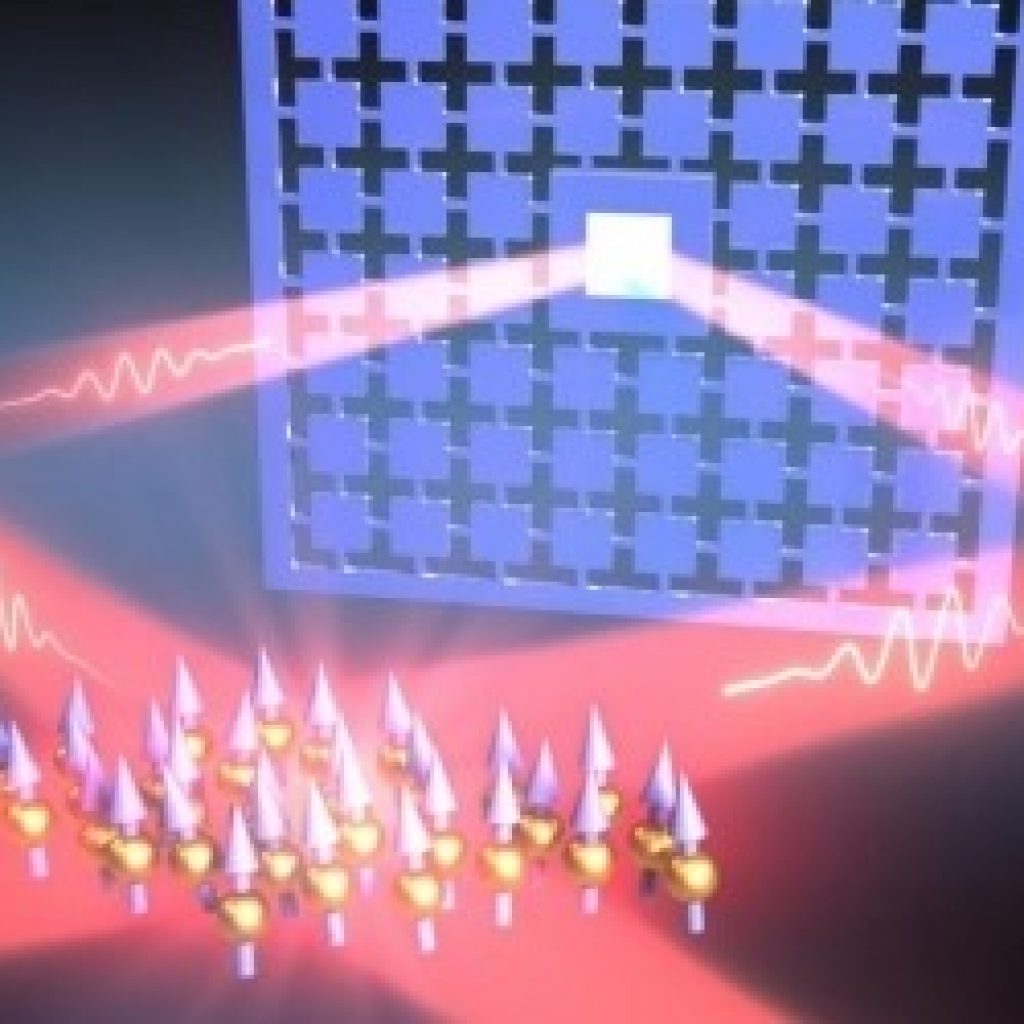(SciTechDaily) Generating quantum states normally requires a strong interaction between the systems involved, such as between several atoms or nanostructures.
Until now, however, sufficiently strong interactions were limited to short distances. Typically, two systems had to be placed close to each other on the same chip at low temperatures or in the same vacuum chamber, where they interact via electrostatic or magnetostatic forces. Coupling them across larger distances, however, is required for many applications such as quantum networks or certain types of sensors.
A team of physicists, led by Professor Philipp Treutlein from the Department of Physics at the University of Basel and the Swiss Nanoscience Institute (SNI), has now succeeded for the first time in creating strong coupling between two systems over a greater distance across a room temperature environment. In their experiment, the researchers used laser light to couple the vibrations of a 100 nanometer thin membrane to the motion of the spin of atoms over a distance of one meter. As a result, each vibration of the membrane sets the spin of the atoms in motion and vice versa.
The experiment is based on a concept that the researchers developed together with the theoretical physicist Professor Klemens Hammerer from the University of Hanover. It involves sending a beam of laser light back and forth between the systems. “The light then behaves like a mechanical spring stretched between the atoms and the membrane, and transmits forces between the two,” explains Dr. Thomas Karg, who carried out the experiments as part of his doctoral thesis at the University of Basel
Laser Loop Acts as a Mechanical Spring to Couple Quantum Systems Over a Distance
